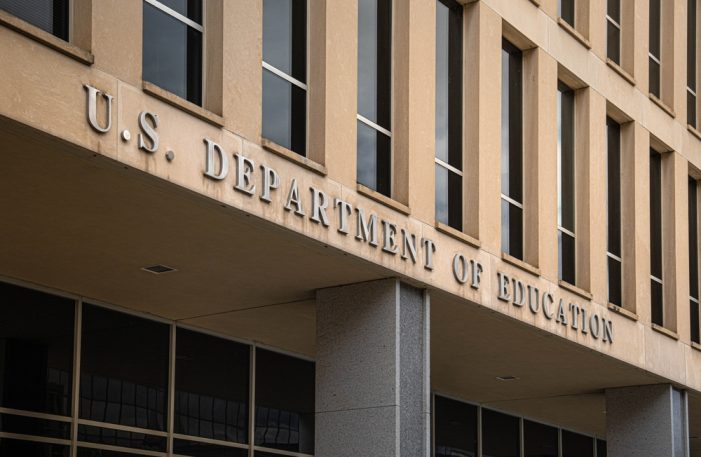By Center for American Progress
The U.S. Department of Education helps ensure all students have access to a quality education by providing critical resources to more than 50 million children attending public and private schools across the country. As the only Cabinet agency designated to oversee the majority of elementary through postsecondary education, the Department of Education has played a leading role in narrowing funding gaps in states and districts, enforcing civil rights laws in U.S. schools, administering federal financial aid to make college more affordable, and advancing research to enhance teaching and learning. Notably, when the Department of Education was first established in 1979, only 31 percent of adults age 25 and over in the United States had completed some postsecondary education, compared with 62 percent in 2022.
Despite these clear benefits, the Trump administration has repeatedly called to dismantle or abolish the department. Eliminating the Department of Education would only further widen academic achievement gaps and harm the country’s most vulnerable communities by denying students and families access to crucial resources—ultimately leading the United States to a less educated citizenry and fewer skilled workers supporting the economy.
To clarify the role of the Department of Education, the Center for American Progress has compiled answers to the following frequently asked questions.
1. Why was the U.S. Department of Education established?
The Department of Education was established by Congress in 1979 under Public Law 96-88 as part of national efforts to provide equal access to education for all. Congress found that education was essential to the development of individuals and the country as a whole—and that no one should be denied access to quality educational opportunities due to their race, creed, color, national origin, or sex. The department was charged with expanding educational access for all, supporting state and local education efforts, encouraging community engagement in education programs, and conducting research to improve education quality.
2. What does the U.S. Department of Education do?
In its mission to strengthen the country’s education system, the department ensures equal opportunity, conducts research to ensure education quality, and administers numerous grant programs to supplement school funding. Federal funding for the Department of Education makes up only 2 percent of the federal budget but provides many essential services and resources to schools, students, and families.
Some of the department’s primary responsibilities include:
- Enforcing civil rights laws to ensure equal access to education for all students
- Conducting high-quality research and evaluation through the Institute of Education Sciences to inform research and evidence-based practices and policies in education
- Administering the $18.4 billion Title I program that provides funding to districts that serve high volumes of low-income students to offset state and local funding disparities
- Providing $14.2 billion to states and districts to support the education of more than 7.5 million students with disabilities under the Individuals with Disabilities Education Act (IDEA), strengthening their access to a free and appropriate education
- Operating the $1.6 trillion federal student loan program that benefits 42.7 million borrowers, allowing students to access higher education and strengthening the U.S. economy
3. What does the U.S. Department of Education not do?
The Department of Education does not manage all education matters across the country. What schools teach and how they spend their money is largely in the hands of the states, who are free to make decisions regarding curriculum, staffing, and academic standards on a state and local level. This allows districts to tailor student learning to their communities and local workforce needs.
4. Can the U.S. Department of Education be eliminated through an executive order?
No. The Department of Education was established through legislation passed by Congress, a power given to Congress through the U.S. Constitution. Therefore, only Congress has the authority to abolish the agency. To do so, a bill would have to pass with a supermajority in the Senate—a minimum of 60 votes.
Executive orders do not have the power to “override federal laws and statutes,” meaning funds appropriated to the department through Congress cannot be revoked by an executive order either.
5. Do most high-performing countries have national-level agencies that oversee and support education?
Yes. The National Center on Education and the Economy (NCEE) analyzes scores from international assessments and other measures to identify the world’s top-performing education systems. In their most recent list, nine out of the 10 top-performing countries have a national-level agency overseeing education.* These agencies, often referred to as “ministries of education,” provide a range of programs to support schools—including designated funding for schools (providing 75 to 100 percent of funds in many countries), national student performance assessment requirements, credentialing requirements for educators and administrators, and accountability systems to ensure compliance and building safety.
The vast majority of the world’s top-performing education systems recognize the importance of having national-level agencies to oversee the quality of education their schools provide. These centralized systems help ensure that all students—regardless of where they live and the local resources available to them—receive a quality education.
Conclusion
To strengthen education, the Department of Education provides guidance and critical supports to states, schools, students, and families across the country. These federal resources help see to the agency’s mission of providing equal access to education for all. It is vital that the department’s work continues so that the United States can fulfill this promise and ensure equal opportunity for all, ultimately strengthening the country’s economy, democracy, and national security.

